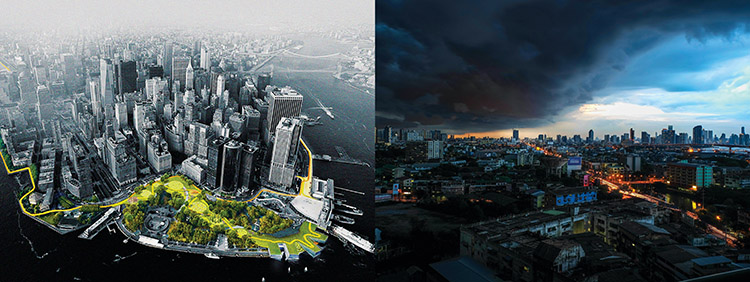Understanding climate change
December 5, 2018
It is projected that by 2100, global surface temperatures will rise by as much as 4 degrees Celsius, causing glaciers to melt and sea levels to rise by as much as 2 metres. Aside from wiping out almost all coastal cities, rising temperature will bring an increase in wildfires, drought, more intense rainfall, infectious diseases, wars over resources, and species extinction, to name a few.
The question therefore is no longer “if” things will happen, but rather “when” will it be too late to act.
What is the forecast for Asia?
In the Fifth Assessment Report of the Intergovernmental Panel on Climate Change (IPCC), it was concluded that there is a greater than 95 per cent probability that human activities over the past 50 years have contributed to the warming of the planet. As a direct result of these activities, particularly the use of fossil fuels, atmospheric carbon dioxide levels have increased from 280 parts per million to 400 parts in the last 150 years. Burning of forests for development, agriculture or industry has contributed to global greenhouse gas (GHG) emissions; it has also significantly reduced the Earth’s capacity to store carbon. This combination could threaten the very existence of our species. We have already witnessed a prelude to the coming catastrophe with extreme weather events in recent years.
Vast and diverse, the impacts of climate change will vary across Asia. Asian nations exhibit different physical and socio-economic features, but they face some similar challenges. With the exception of Singapore and Japan, most Asian countries are still developing and dependent on “small, narrowly focused economies that are vulnerable to […] artificial and natural shocks,” says the Asian Development Bank. And though some developing countries may have a small contribution to global output of GHG emissions, they may very well be the first to witness its negative impacts. A large population of Asia already resides along low-lying coastlines and major river deltas, where coastal erosion and pollution threaten their livelihood. With salt water intrusion and degradation of marine ecosystems, even those living inland are susceptible to the impacts of climate-induced disasters. If we continue as usual, climate change will threaten people, infrastructure and ecosystems. Cities like Guangzhou, Mumbai and Osaka could be underwater by 2100, putting 2 billion people at risk. Many will migrate to other cities in search of work and shelter, which will further exacerbate social tensions and stress existing infrastructure.
According to the United Nations, a global target of 50 to 85 per cent GHG emissions reduction is recommended by 2050 to mitigate the impacts of climate change. This calls for large commitments from both the developed countries of Asia and those still developing. The Paris Agreement, which sets out a global commitment to GHG emissions reductions, was ratified by 169 nations in 2015. Asia’s developing nations are exempt from signing the Protocol; nevertheless, big players like China have committed to the Agreement.
To read the complete article, get your hardcopy at our online shop/newsstands/major bookstores; subscribe to FuturArc or download the FuturArc App to read the issues.
Previously Published City Profile
Contact us at https://www.futurarc.com/contact-us for older commentaries.





